#diego domínguez
Explore tagged Tumblr posts
Text


you're in love... true love🥹🥹
#diecesca#francesca caviglia#diego domínguez#lodovica comello#diego hernandez#Violetta#Violetta temporada 3#they're in love#LOOK AT THEM#THAT'S LOVE#heart eyes#cute date#fran x diego#diego x fran#sunshine girl#ex bad boy#lol
47 notes
·
View notes
Text
NOT THE CHACHI PIRULI REFERENCE LMAO
#chachi piruli? NO 😡#cha-chi chachi piruli será será que me enamoro-#mara’s violetta rewatch#s2 aka the schemes#2x13#diego hernandez#beto benvenuto#violetta#diego domínguez#i cant get it out of my head now help
2 notes
·
View notes
Text
i think we should talk more about what the fuck is up with "main villains of argentine kids-oriented telenovelas that are like a-jjba-protagonist-and-a-half" but maybe that is just me

they probably have a lot more in common but i was tired... and this basically came up to me yesterday in a dream, so yeah.
#i swear to god that this makes a lot more sense if you followed all three of these shows and saw how they acted#i'm talking about ámbar and diego#ámbar is so much similar to dio if we're talking temper/personality and how they act#she burned down a whole skate rink just because#ámbar smith#diego hernández#dio brando#dio#soy luna#sl#i am luna#violetta#jojo's bizarre adventure#jojo no kimyou na bouken#jjba#valentina zenere#diego domínguez#venn diagram#dcla
42 notes
·
View notes
Text
Amor Mio | Diego & Francesca

⏯️ Amor Mio (Fran & Diego).wav
4 notes
·
View notes
Photo






Violetta Nostalgia
The U-Mix Show - Duets, part 2 💙
#violetta#lodovica comello#rodrigo pedreira#ezequiel rodríguez#diego domínguez#pablo sultani#al and his gifs <3
17 notes
·
View notes
Text
the boys at Estadi Olímpic Lluís Companys 💙❤️

#lamine pedri and gavi YAPPING#shock lmao#what on earth is pedri doing lmao#pedri#pedri gonzalez#pablo gavi#eric garcia#dani olmo#lamine yamal#hector fort#pablo torre#diego kochen#sergi domínguez#pau victor#fc barcelona#fc barça#barça#*matches#*la liga
74 notes
·
View notes
Text
Fiscalía se presenta ante el Congreso
Cumple Presidencia del Congreso recepción del Informe Anual de la FGE Atestiguan el presidente de la Junta de Coordinación Política de esta soberanía, diputado Esteban Bautista Hernández, y la Comisión de Procuración de Justicia Xalapa, Ver., 13 de diciembre de 2024.- Este viernes, la presidenta de la Mesa Directiva de la LXVII Legislatura, diputada Tanya Carola Viveros Cházaro, recibió de…
#Adrián Sigfrido Ávila Estrada#DeOficio#Diego Castañeda Aburto#Esteban Bautista Hernández#Ingrid Jenny Calderón Domínguez#Legislativo#Tanya Carola Viveros Cházaro#Verónica Hernández Giadáns
0 notes
Text
"I had to fight to be myself and to be respected. I'm proud to say I'm a lesbian. I don't talk about it too much, but I don't deny it. I've had to confront society and the Church, which says that homosexuals are condemned. It's absurd! How can they judge someone who was born that way? I didn't learn to be a lesbian, nobody taught me to be the way I am. I was born this way. I've never slept with a man. I've never slept with a man. Yes, I'm a virgin and I'm not ashamed. My Gods made me this way"
- Chavela Vargas

Chavela Vargas (María Isabel Anita Carmen de Jesús Vargas Lizano) was a Mexican singer of Costa Rican origin, born in 1919 in Costa Rica and died in 2012 in Mexico.
She is considered a leading figure in ranchera music, which she sang with strength and emotion. Her voice, rough and warm at the same time, served her theatrical, passionate and human interpretations of standards from the traditional Mexican repertoire.

"And since I have to say it almost everywhere, I'll say it: my parents didn't want me. I suffered for it".
She has an extremely difficult and conflicted relationship with her family, who do not accept her in any way. As a teenager, she left her country and her family for Mexico. The young woman rejected and criticised the ultra-conservative society in which she lives. Once in Mexico, she began singing in the streets.
In the 1940s, she became friends with the painters Diego Rivera and Frida Kahlo, staying with them for a while and becoming Frida Kahlo's lover.
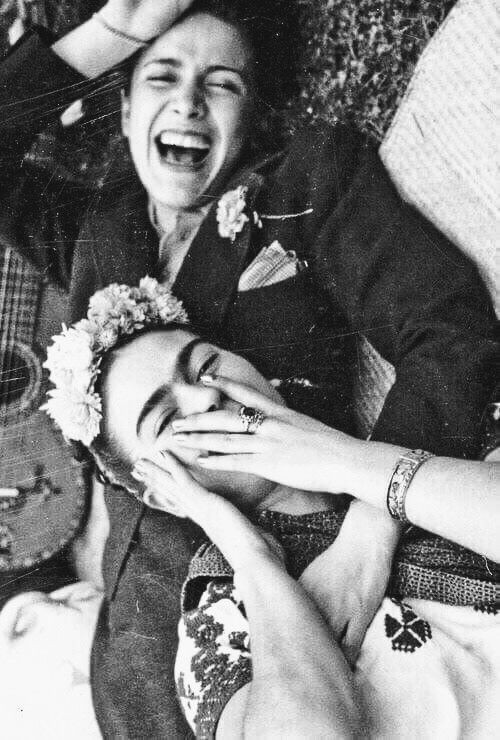

At the age of 30, she was noticed on Mexico City's Avenida Insurgentes by the composer and famous rancheras singer José Alfredo Jiménez, who became the author of her main hits. With his help, she performed in the cabarets of Mexico City in the mid-1950s before embarking on the road to success in Acapulco, an international tourist destination, where she sang at one of Elizabeth Taylor's weddings.

Chavela Vargas rose to fame in the 1960s and 1970s, touring the world. She became a well-known figure in ranchera song, to which she gave a new lease of life.
Dressed like a man, smoking and drinking like a man, carrying a pistol, "the lady with the red poncho, silver hair and brown flesh" as the Spanish singer Joaquín Sabina described her, is characterised by her red sarape.
In a television interview in 2000, she came out as a homosexual woman. This is where the text at the beginning of the post is from!
Chavela's career reached its peak from the recording of her first album (Noche de Bohemia) in 1961 until the end of the 1970s. This was followed by a long period of fifteen years, during which the singer, suffering from a heavy addiction to alcohol, interrupted her musical career, which she did not resume until 1991.
Encouraged by her friend, the director Pedro Almodóvar, who compared her to Édith Piaf, Chavela embarked on a world tour, performing at the Olympia in Paris and Carnegie Hall in New York. Among her most outstanding performances was Tú me acostumbraste by Frank Domínguez in Pedro Almodóvar's film Babel. Being a close friend of Pedro, she has appeared in several of his films, including The Flower of My Secret.
Following a final concert in Madrid on 10 July 2012 to present her album (La Luna Grande), she was hospitalised in the Spanish capital with serious respiratory problems. She died on 5 August 2012, aged 93.
I am sure you know at least one of her song, La Llorona !
In any case, Chavela was an immense artist who had a profound impact on music, and I'm delighted to have discovered her, or rather re-discovered her. I listened to some of her songs and they're amazing if you like that kind of music ! And please look her up yourself, she was such an interesting person, I couldn't talk about everything in this post or it would have been too long !
#chavela vargas#music#mexican music#ranchera music#lesbian#lesbian pride#lesbian history#pride#lesbian culture#lesbian artist#female homosexual#female homosexuality
201 notes
·
View notes
Text

blasting 𝒉𝒆𝒍𝒍 𝒂𝒃𝒐𝒗𝒆 𝒃𝒚 𝒑𝒊𝒆𝒓𝒄𝒆 𝒕𝒉𝒆 𝒗𝒆𝒊𝒍 through their airpods is 𝐝𝐨𝐥𝐨𝐫𝐞𝐬 𝐝𝐨𝐦𝐢́𝐧𝐠𝐮𝐞𝐳 . oh , you don’t know them ? they’re the 𝒕𝒘𝒆𝒏𝒕𝒚 - 𝒇𝒊𝒗𝒆 year old 𝐟𝐢𝐥𝐦𝐦𝐚𝐤𝐞𝐫 who just went viral for 𝒐𝒍𝒅 𝒚𝒐𝒖𝒕𝒖𝒃𝒆 𝒗𝒊𝒅𝒆𝒐𝒔 𝒐𝒇 𝒕𝒉𝒆𝒎 𝒕𝒖𝒓𝒏𝒊𝒏𝒈 𝒃𝒂𝒓𝒃𝒊𝒆𝒔 𝒈𝒐𝒕𝒉 — 𝒘𝒉𝒂𝒕 𝒂𝒏 𝒐𝒅𝒅 𝒄𝒉𝒊𝒍𝒅 𝒕𝒉𝒆𝒚 𝒘𝒆𝒓𝒆 ! . yup , the one that drives a 𝟐𝟎𝟐𝟒 𝐫𝐨𝐥𝐥𝐬 - 𝐫𝐨𝐲𝐜𝐞 𝐠𝐡𝐨𝐬𝐭 . i hear they’re pretty 𝒃𝒓𝒊𝒍𝒍𝒊𝒂𝒏𝒕 , but others have claimed that they’re quite 𝐩𝐞𝐜𝐮𝐢𝐥𝐚𝐫 . that makes sense , considering they’re often labeled as 𝒄𝒓𝒆𝒆𝒑𝒚 𝒍𝒐𝒏𝒆𝒓 𝒈𝒊𝒓𝒍 .
─── visage ⋆ interactions ⋆ pinterest .

⊹ 𝙶𝙴𝙽𝙴𝚁𝙰𝙻 .
· full name ⸝⸝ dolores ximena domínguez . · nicknames ⸝⸝ none . · date of birth ⸝⸝ may 13th , 1999 . · age ⸝⸝ twenty - five . · place of birth ⸝⸝ san diego , california . · gender ⸝⸝ genderfluid . · pronouns ⸝⸝ they / she . · orientation ⸝⸝ bisexual and biromantic . · nationality ⸝⸝ american . · ethnicity ⸝⸝ indigenous mexican and black . · education ⸝⸝ bachelor's degree in cinematic arts , film and television from the university of southern california . · occupation ⸝⸝ director , writer , animator and producer ( career claim — tim burton . ) · lingo ⸝⸝ english , spanish , american sign language , mandarin chinese , japanese , italian , greek .
⊹ 𝚁𝙴𝙻𝙰���𝙸𝙾𝙽𝚂 .
· father ⸝⸝ santiago domínguez , a hollywood actor who has received numerous accolades and will not stop his work until he is physically unable to . · mother ⸝⸝ gabriela domínguez , a neurosurgeon whose life too revolves around work and pursuing other studies . · siblings ⸝⸝ one brother named joaquín , a twenty - two year old student still searching for his aspiration in life . · children ⸝⸝ none . · pets ⸝⸝ a black persian cat named salem , a black bombay cat named phantom and a black yorkshire terrier named nosferatu .
⊹ 𝙸𝙳𝙴𝙽𝚃𝙸𝚃𝚈 .
· zodiac ⸝⸝ taurus . · alignment ⸝⸝ chaotic neutral . · mbti type ⸝⸝ int . · positive traits ⸝⸝ brilliant , perceptive , quick - witted , devoted . · negative traits ⸝⸝ peculiar , pessimistic , reserved , snarky . · tropes ⸝⸝ creepy loner girl , brutal honesty , deadpan snarker , not so stoic , women are wiser . · hobbies ⸝⸝ sketching , archery , researching conspiracy theories and murder mysteries , ballet , checkers , going through haunted houses , studying behaviors , podcasts , fencing , street racing , competitive swimming . · character inspiration ⸝⸝ wednesday and morticia addams ( the addams family film series and netflix's wednesday ) , tiffany valentine ( bride of chucky ) , violet parr ( the incredibles . )
⊹ 𝙱𝙰𝙲𝙺𝙶𝚁𝙾𝚄𝙽𝙳 .
· to be written !
⊹ 𝙿𝙴𝚁𝚂𝙾𝙽𝙰𝙻𝙸𝚃𝚈 .
· to be written !
5 notes
·
View notes
Text
2024 New York Yankees Roster
Pitchers
#0 Marcus Stroman (Brookhaven, New York)*
#29 Clayton Beeter (North Richland Hills, Texas)**
#30 Luke Weaver (DeLand, Florida)
#35 Clay Holmes (Slocomb, Alabama)
#36 Clarke Schmidt (Acworth, Georgia)
#41 Tommy Kahnle (Colonie, New York)
#43 Jonathan Loáisiga (Managua, Nicaragua)
#45 Gerrit Cole (Orange, California)
#47 Victor González (Ciudad Tuxpan, Mexico)*
#55 Carlos Rodón (Holly Springs, North Carolina)
#56 Lou Trivino (Green Lane, Pennsylvania)
#57 Nick Burdi (Downers Grove Township, Illinois)*
#59 Scott Effross (Twinsburg, Ohio)
#64 Caleb Ferguson (Jefferson Township, Ohio)*
#65 Nestor Cortés; Jr. (Hialeah, Florida)
#71 Ian Hamilton (Vancouver, Washington)
#81 Luis Gil (Azua De Compostella, Dominican Republic)
#87 McKinley Moore (Houston, Texas)*
Catchers
#28 Austin Wells (Las Vegas, Nevada)
#39 Jose Trevino (Corpus Christi, Texas)
Infielders
#11 Anthony Volpe (Watchung, New Jersey)
#19 Jon Berti (Troy, Michigan)*
#25 Gleyber Torres (Santiago De León De Caracas, Venezuela)
#26 D.J. LeMahieu (Bloomfield Charter Township, Michigan)
#48 Anthony Rizzo (Parkland, Florida)
#91 Oswald Peraza (Barquisimeto, Venezuela)
Outfielders
#12 Trent Grisham (North Richland Hills, Texas)*
#14 Jahmai Jones (Peachtree Corners, Georgia)*
#22 Juan Soto; Jr. (Santo Domingo, Dominican Republic)*
#24 Alex Verdugo (Tucson, Arizona)*
#27 Giancarlo Stanton (Los Angeles, California)
#89 Jasson Domínguez (Esperanza, Dominican Republic)
#95 Oswaldo Cabrera (Gaurenas, Venezuela)
#99 Aaron Judge (San Joaquin County, California)
Coaches
Manager Aaron Boone (Villa Park, California)
Bench coach Brad Ausmus (New Haven, Connecticut)
Hitting coach James Rowson (Mt. Vernon, New York)
Assistant hitting coach Casey Dykes (Franklin, Tennessee)
Assistant hitting coach Pat Roessler (Phoenix, Arizona)
Pitching coach Matt Blake (Concord, New Hampshire)
Assistant pitching coach Desi Druschel (Vinton, Iowa)
Catching coach Tanner Swanson (Cle Elum, Washington)
Bullpen coach Mike Harkey (San Diego, California)
1B/infield coach Travis Chapman (Jacksonville, Florida)
3B/outfield coach Luis Rojas (Santo Domingo, Dominican Republic)
#Sports#Baseball#MLB#New York Yankees#Celebrities#Florida#Dominican Republic#North Carolina#Georgia#New York#Texas#Illinois#Ohio#Mexico#Washington#Nicaragua#Alabama#Pennsylvania#Nevada#Michigan#Venezuela#New Jersey#Connecticut#New Hampshire#Iowa#Tennessee#Arizona
8 notes
·
View notes
Text
Cine: Cuernavaca (2018)











La vida de Andy (Emilio Puente) da un giro brutal cuando su madre (Mariana Gajá) recibe el impacto de bala de un malhechor que les asaltó. Casi sin tiempo para asimilar la tragedia, es llevado a la casa de la infancia de su padre, de quién no sabe su paradero. Allí, en una finca de Cuernavaca, vive su abuela Carmen (Carmen Maura) junto a su hija Dhely (Dulce Domínguez), una mujer con síndrome de Down con gran amor por los gatos. Al tiempo, el pobre niño recibe la noticia de que su madre ha fallecido.
La relación entre abuela y nieto es amable, pero tirante. Ésta decide que una manera de afronatr el duelo es ponerlo a trabajar en la finca, ya sea preparando el suelo o recolectando frutas para la mermelada que, declama, es la mejor de Cuernavaca. Allí tiene la mala fortuna de conocer a Charly (Diego Álvarez García), un muchacho a quien su padre ha conocido en la cárcel. Mal antecedente que no evita que el muchacho lo siga como hormiga al azúcar (y la comparación no es azarosa). En su frustración por no poder contactarse con su progenitor, le pide que le consiga una batería y un cargador para operar el celular que éste dejó en la finca. Charly le pide dinero para conseguirlo y Andy le da un poco de dinero que le robó a su abuela. A pesar de que es consciente de que Charly no le da el uso prometido (lo gasta con sus amigos en una feria local), le promete que le dará ambos objetos si le facilita una entrada nocturna a la finca con fines de robo.
A todo esto, el pequeño logra conseguir a su padre (Moisés Arizmendi), quien visita la casa; tras el alivio inicial, Andy descubre una triste verdad sobre su idealizado progenitor a la vez que es intimado por Charly para que cumpla lo prometido.
El tema esencial en el filme del mexicano Alejandro Andrade es, claro, el abandono infantil de un niño que ha perdido su norte en el mundo, todo lo que conocía, y se encuentra en un aparente paraíso pueblerino con una circunstancia traumática sobre sus espaldas.
youtube
#cine#Cuernavaca#2017#gay#infancia#México#EmilioPuente#MarianaGajá#CarmenMaura#DulceDomínguez#DiegoÁlvarezGarcía#MoisésArizmendi#AlejandroAndrade
2 notes
·
View notes
Text
Las chicas cuando
Las chicas cuando descubren que desaparecieron todos los vídeos sobre la historia de Diego y Francesca de youtube
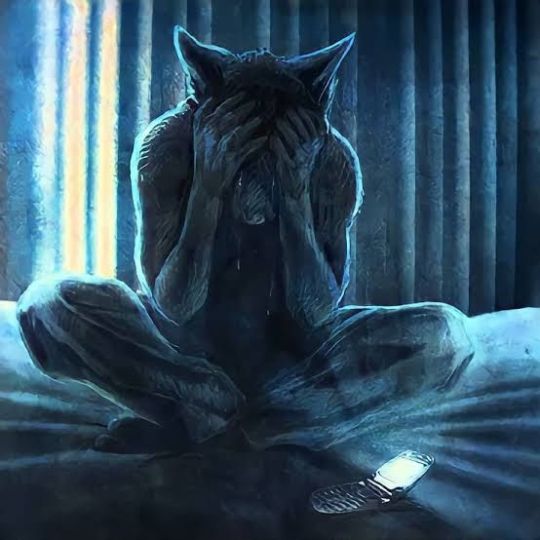
#diecesca#francesca cauviglia#diego domínguez#diego x fran#fran x diego#me quiero morir#serotonina? I don't know her
19 notes
·
View notes
Text
Generation of 27
The Generation of '27 (Spanish: Generación del 27) was an influential group of poets that arose in Spanish literary circles between 1923 and 1927, essentially out of a shared desire to experience and work with avant-garde forms of art and poetry. Their first formal meeting took place in Seville in 1927 to mark the 300th anniversary of the death of the baroque poet Luis de Góngora. Writers and intellectuals paid homage at the Ateneo de Sevilla, which retrospectively became the foundational act of the movement.
Terminology:
The Generation of '27 has also been called, with lesser success, "Generation of the Dictatorship", "Generation of the Republic", "Generation Guillén-Lorca" (Guillén being its oldest author and Lorca its youngest), "Generation of 1925" (average publishing date of the first book of each author), "Generation of Avant-Gardes", "Generation of Friendship", etc. According to Petersen, "generation group" or a "constellation" are better terms which are not so much historically restricted as "generation".
Aesthetic style:
The Generation of '27 cannot be neatly categorized stylistically because of the wide variety of genres and styles cultivated by its members. Some members, such as Jorge Guillén, wrote in a style that has been loosely called jubilant and joyous and celebrated the instant, others, such as Rafael Alberti, underwent a poetic evolution that led him from youthful poetry of a more romantic vein to later politically-engaged verses.
The group tried to bridge the gap between Spanish popular culture and folklore, classical literary tradition and European avant-gardes. It evolved from pure poetry, which emphasized music in poetry, in the vein of Baudelaire, to Futurism, Cubism, Ultraistand Creationism, to become influenced by Surrealism and finally to disperse in interior and exterior exile following the Civil Warand World War II, which are sometimes gathered by historians under the term of the "European Civil War". The Generation of '27 made a frequent use of visionary images, free verses and the so-called impure poetry, supported by Pablo Neruda.
Members:
In a restrictive sense, the Generation of '27 refers to ten authors, Jorge Guillén, Pedro Salinas, Rafael Alberti, Federico García Lorca, Dámaso Alonso, Gerardo Diego, Luis Cernuda, Vicente Aleixandre, Manuel Altolaguirre and Emilio Prados. However, many others were in their orbit, some older authors such as Fernando Villalón, José Moreno Villa or León Felipe, and other younger authors such as Miguel Hernández. Others have been forgotten by the critics, such as Juan Larrea, Pepe Alameda, Mauricio Bacarisse, Juan José Domenchina, José María Hinojosa, José Bergamín or Juan Gil-Albert. There is also the "Other generation of '27", a term coined by José López Rubio, formed by himself and humorist disciples of Ramón Gómez de la Serna, including: Enrique Jardiel Poncela, Edgar Neville, Miguel Mihura and Antonio de Lara, "Tono", writers who would integrate after the Civil War (1936–39) the editing board of La Codorniz.
Furthermore, the Generation of '27, as clearly reflected in the literary press of the period, was not exclusively restricted to poets, including artists such as Luis Buñuel, the caricaturist K-Hito, the surrealist painters Salvador Dalí and Óscar Domínguez, the painter and sculptor Maruja Mallo, as well as Benjamín Palencia, Gregorio Prieto, Manuel Ángeles Ortiz and Gabriel García Maroto, the toreros Ignacio Sánchez Mejías and Jesús Bal y Gay, musicologists and composers belonging to the Group of Eight, including Bal y Gay, Ernesto Halffter and his brother Rodolfo Halffter, Juan José Mantecón, Julián Bautista, Fernando Remacha, Rosa García Ascot, Salvador Bacarisse and Gustavo Pittaluga. There was also the Catalan Group who presented themselves in 1931 under the name of Grupo de Artistas Catalanes Independientes, including Roberto Gerhard, Baltasar Samper, Manuel Blancafort, Ricard Lamote de Grignon, Eduardo Toldrá and Federico Mompou.
Finally, not all literary works were written in Spanish: Salvador Dalí and Óscar Domínguez also wrote in French. Foreigners such as the Chilean poets Pablo Neruda and Vicente Huidobro, the Argentine writer Jorge Luis Borges, and the Franco-Spanish painter Francis Picabia also shared much with the aesthetics of the Generation of '27.
The Generation of '27 was not exclusively located in Madrid, but rather deployed itself in a geographical constellation which maintained links together. The most important nuclei were in Sevilla, around the Mediodía review, Tenerife around the Gaceta de Arte, and Málaga around the Litoral review. Others members resided in Galicia, Catalonia and Valladolid.
The Tendencies of '27:
The name "Generation of 1927" identifies poets that emerged around 1927, the 300th anniversary of the death of the Baroque poet Luis de Góngora y Argote to whom the poets paid homage. It sparked a brief flash of neo-Gongorism by outstanding poets like Rafael Alberti, Vicente Aleixandre, Dámaso Alonso, Luis Cernuda, Gerardo Diego and Federico García Lorca.
Spanish Civil War aftermath:
The Spanish Civil War ended the movement: García Lorca was murdered, Miguel Hernandez died in jail and other writers (Rafael Alberti, Jose Bergamin, León Felipe, Luis Cernuda, Pedro Salinas, Juan Ramón Jiménez, Bacarisse) were forced into exile, although virtually all kept writing and publishing late throughout the 20th century.
Dámaso Alonso and Gerardo Diego were among those who reluctantly remained in Spain after the Francoists won and more or less reached agreements with the new authoritarian and traditionalist regime or even openly supported it, in the case of Diego. They evolved a lot, combining tradition and avant-garde, and mixing many different themes, from toreo to music to religious and existentialist disquiets, landscapes, etc. Others, such as Vicente Aleixandre and Juan Gil-Albert, simply ignored the new regime, taking the path of interior exile and guiding a new generation of poets.
However, for many Spaniards the harsh reality of Francoist Spain and its reactionary nature meant that the cerebral and aesthetic verses of the Generation of '27 did not connect with what was truly happening, a task that was handled more capably by the poets of the Generation of '50 and the social poets.
Statue:
A statue dedicated to the Generation 27 Poets is now in Seville in Spain. The inscription on the monument translates as 'Seville The poets of the Generation of 27'
List of members[edit]
Rafael Alberti (1902–1999)
Vicente Aleixandre (1898–1984)
Amado Alonso (1897–1952)
Dámaso Alonso (1898–1990)
Manuel Altolaguirre (1905–1959)
Francisco Ayala (1906–2009)
Mauricio Bacarisse (1895–1931)
José Bello (1904–2008)
Rogelio Buendía (1891–1969)
Alejandro Casona (1903–1965)
Juan Cazador (1899–1956)
Luis Cernuda (1902–1963)
Juan Chabás (1900–1954)
Ernestina de Champourcín (1905–1999)
Gerardo Diego (1896–1987)
Juan José Domenchina (1898–1959)
Antonio Espina (1894–1972)
Agustín Espinosa (1897–1939)
León Felipe (1884–1968)
Agustín de Foxá (1903–1959)
Pedro García Cabrera (1905–1981)
Federico García Lorca (1898–1936)
Pedro Garfias (1901–1967)
Juan Gil-Albert (1904–1994)
Ernesto Giménez Caballero (1899–1988)
Jorge Guillén (1893–1984)
Emeterio Gutiérrez Albelo (1905–1937)
Miguel Hernández (1910–1942)
José María Hinojosa (1904–1936)
Enrique Jardiel Poncela (1901–1952)
Rafael Laffón (1895–1978)
Antonio de Lara (1896–1978)
Juan Larrea (1895–1980)
José López Rubio (1903–1996)
José María Luelmo (1904–1991)
Francisco Madrid (1900–1952)
Paulino Masip (1899–1963)
Concha Méndez (1898–1986)
Miguel Mihura (1905–1977)
Edgar Neville (1899–1967)
Antonio Oliver (1903–1968)
Pedro Pérez-Clotet (1902–1966)
Rafael Porlán (1899–1945)
Emilio Prados (1899–1962)
Joaquín Romero Murube (1904–1969)
Pedro Salinas (1891–1951)
Guillermo de Torre (1900–1971)
José María Souvirón (1904–1973)
Miguel Valdivieso (1897–1966)
Fernando Villalón (1881–1930)
15 notes
·
View notes
Text
I feel no patriotic love for Spain and in fact I yearn for its inevitable demise but when foreigners start dealing with the fact that their family name system heavily favours men's family names I am reminded that not everything about this country sucks lmao
If you don't know what I'm talking about, ever since medieval Castille everyone involved in a marriage has kept their surnames, and the children inherit the father's first family name as their first family name and the mother's first family name as their second. The origin of this practice is in no way feminist, but in modern day Spain it means that there's no debate around keeping your own name because it's always been yours to keep. Children carry both their parent's surnames and it's been a good while now since it was passed into law that even if the default order is Givenname Fathersname Mothersname, that is now optional.
It is not unusual for Spaniards to go by their mother's family name if they just happen to like it. 2 presidents ago we had José Luis Rodríguez Zapatero (José Luis given name, Rodríguez father's family name & Zapatero mother's family name) aka just Zapatero, and his minister of interior and succesor at the front of the main centerleft party in Spain Alfredo Pérez Rubalcaba aka Rubalcaba (he lost the election).
In fact, I remember vividly a moment, shortly after Rubalcaba lost the election if I'm not mistaken, when he was leader of the opposition and as a mark of disrespect he was referd to as "Sr. Pérez" instead of "Sr. Pérez Rubalcaba" or "Sr. Rubalcaba", it was a whole thing with the (parlamentary) left complaining about the fact that the right intentionally used the man's first surname because it sounds less remarkable (Pérez is one of the most common Spanish surnames while Rubalcaba is not, I don't think I've ever heard of other people named Rubalcaba besides the guy in question), and the right calling the left loony because Pérez is literally the guy's first surname and refering to people by the first surname is the normalest thing to do.
Some very famous people you might have heard of that prominently use their mother's family name are Picasso (painter, Pablo Ruiz Picasso, 1881-1973), Velázquez (painter, Diego Rodríguez de Silva Velázquez, 1599-1660), Federico García Lorca (poet, 1898-1936), Javier Bardem (actor, Javier Encina Bardem, 1969-), Antonio Banderas (actor, José Antonio Domínguez Bandera, 1960-)
This is also not exclusive to Spain, I didn't know it but Chile's Pedro Pascal uses his second surname as artistic name, his full name is José Pedro Balmaceda Pascal.
This is not to say all these people are feminists (in fact Picasso was a known misogynistic abuser) or to say Spain is an extremely feminist country (from what I know, nowadays it's a country with a very strong feminist movement but I don't think this has anything to do with it). This is just a historical coincidence probably derived from the fact that noble people sometimes had more important mothers than fathers and they wanted to be able to carry ALL their family names.
(Also, one curious thing is that looking up people who use their mother's surname none of them were women, idk if I just haven't looked hard enough or if it's more common for men to do it.)
I'm not trying to make a point here. End of post.
#spain#surname#family name#keeping your name#José Luis Rodríguez Zapatero#Alfredo Pérez Rubalcaba#Pablo Picasso#Diego Velázquez#Javier Bardem#Antonio Banderas#Pedro Pascal#politics#feminism#spanish#chile
7 notes
·
View notes
Text
I talked about it, here’s Rey, Diego’s new song 🖤
⏯️ Rey (Diego).wav
2 notes
·
View notes
Photo
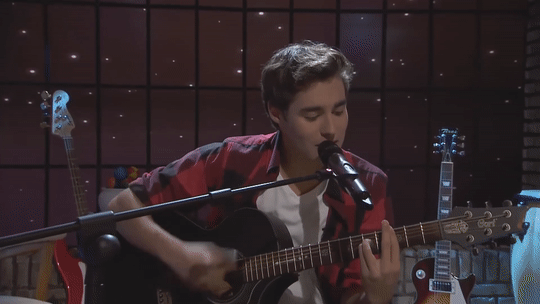

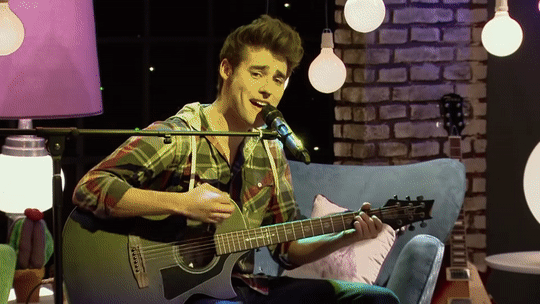
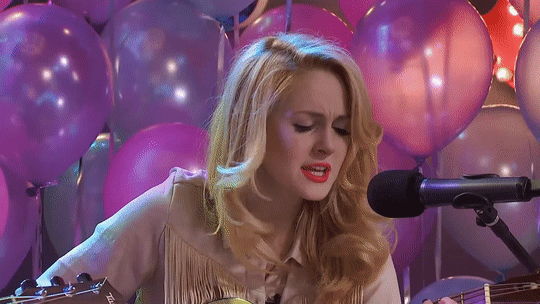
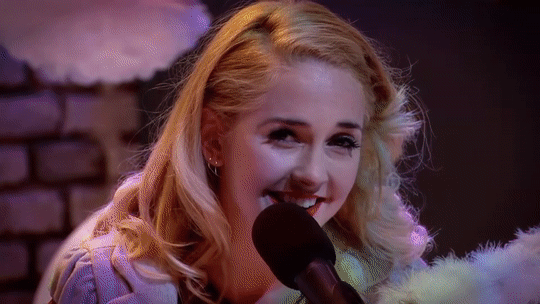
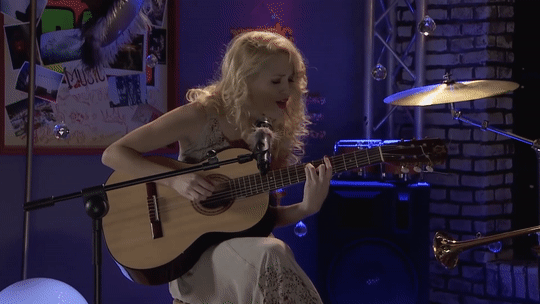
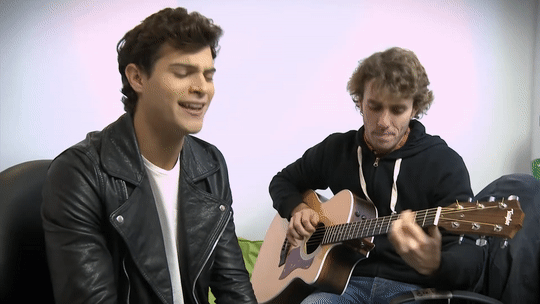
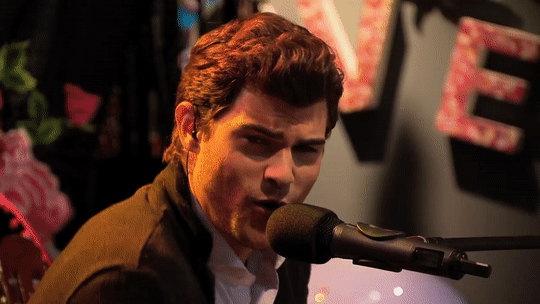
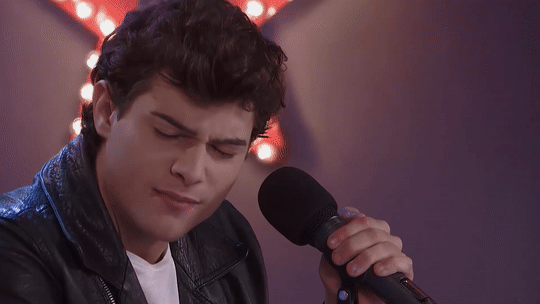
Violetta Nostalgia
The U-Mix Show - Jorge, Mechi and Diego 💜
12 notes
·
View notes